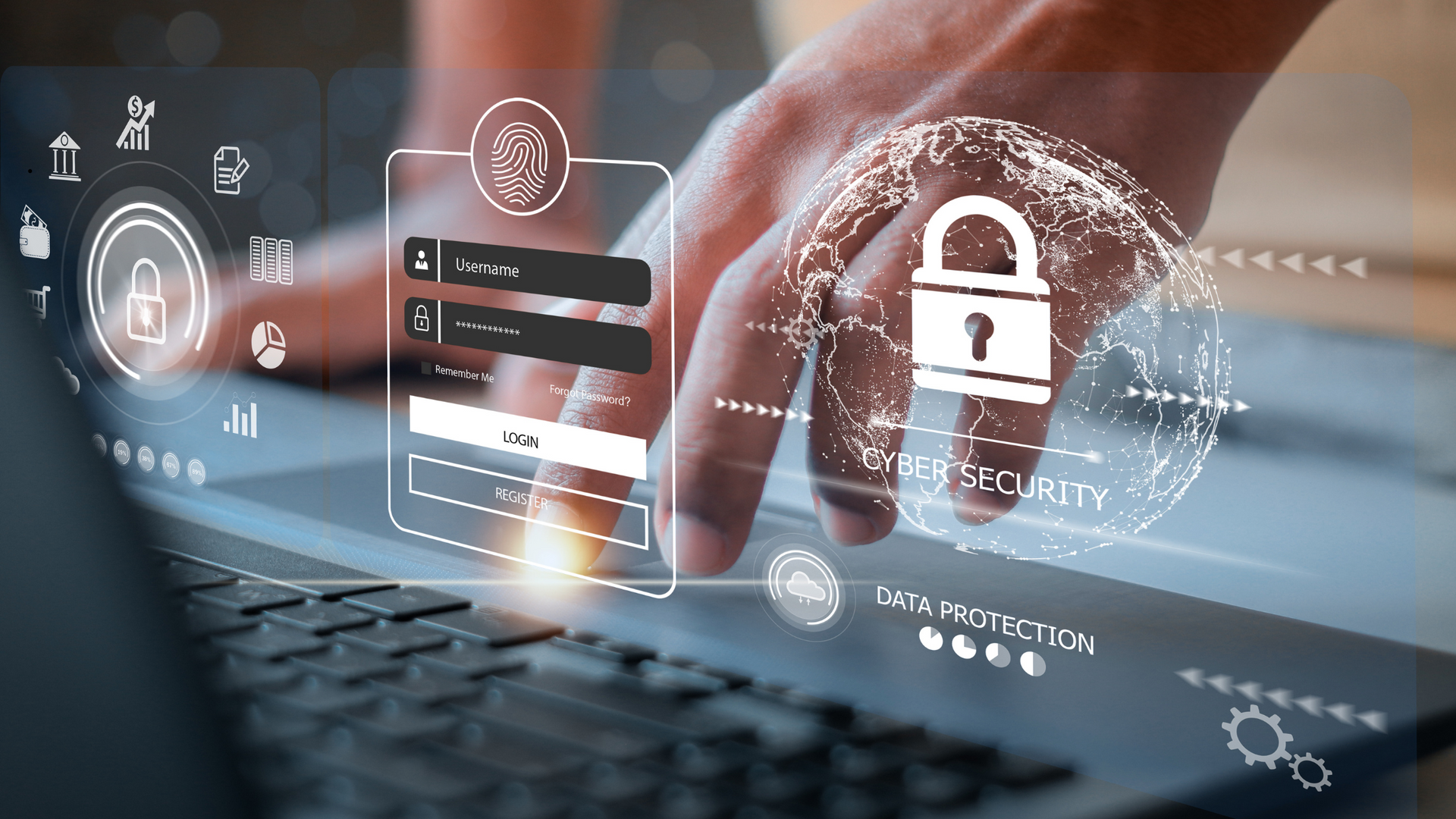The Importance of Data Privacy: Protecting Sensitive Information in the Digital Age
In today’s digital landscape, data privacy and protection are more critical than ever. With cyber threats ever-present and on the rise, businesses and individuals alike must take proactive steps to secure sensitive information and comply with industry regulations. Whether you operate in healthcare, finance, retail, manufacturing, or any other sector handling personal data, robust privacy practices can protect your customers, enhance trust, and prevent costly breaches. Likewise, individuals must take similar precautions to safeguard their personal information from identity theft, financial fraud, and cyberattacks at home.

Understanding Data Privacy and Compliance
Data privacy refers to the responsible handling, storage, and processing of sensitive information. Many industries have strict regulations to ensure organizations protect Personally Identifiable Information (PII) and other confidential data.
Healthcare: HIPAA Compliance and PHI Protection
For medical providers, HIPAA (Health Insurance Portability and Accountability Act) sets strict guidelines for handling Protected Health Information (PHI). This includes patients’ medical records, insurance details, and any other identifiable health information. Non-compliance can lead to severe penalties, including hefty fines and legal repercussions. To remain compliant:
- Encrypt all PHI data in storage and transmission.
- Limit access to patient records based on necessity.
- Implement multi-factor authentication (MFA) to secure login credentials.
- Train employees regularly on HIPAA-compliant best practices.
- Conduct regular risk assessments to ensure compliance.
- Establish policies for secure disposal of medical records and outdated digital files.
Financial Sector: Safeguarding Credit Card and Payment Data
Financial institutions and businesses that process payments must adhere to the Payment Card Industry Data Security Standard (PCI DSS). This standard helps protect credit card information from fraud and unauthorized access. Best practices include:
- Never store credit card numbers in unencrypted documents or emails.
- Use tokenization or encryption when handling payment transactions.
- Implement firewalls and intrusion detection systems to monitor network activity.
- Regularly update and patch systems to protect against vulnerabilities.
- Educate employees on secure payment handling and fraud prevention.
- Monitor transactions for suspicious activities and implement fraud detection tools.
Retail and E-Commerce: Protecting Customer Data Online
With the popularity of online shopping, businesses must ensure customer data security to prevent data breaches. Consumers expect companies to handle their names, addresses, and payment details with care. Steps to improve security include:
- Using Secure Socket Layer (SSL) encryption for all transactions.
- Implementing secure authentication methods for customer accounts.
- Avoiding the storage of unnecessary customer data.
- Educating employees on recognizing phishing attempts and malware risks.
- Enforcing policies for secure checkout and fraud prevention.
- Implementing AI-driven threat detection to prevent cyberattacks on e-commerce platforms.
Manufacturing: NIST Compliance and Protecting Intellectual Property
Manufacturing companies often handle sensitive intellectual property (IP), proprietary designs, and supply chain data. The National Institute of Standards and Technology (NIST) Cybersecurity Framework provides guidelines to help manufacturers safeguard their information. To remain compliant:
- Conduct regular risk assessments to identify vulnerabilities.
- Implement access controls to limit exposure of critical systems.
- Create contingency plan for backups of critical data, applications, and systems.
- Test information system recovery and restoration of backups regularly.
- Encrypt sensitive design and supply chain data.
- Develop an incident response plan to mitigate potential breaches.
- Secure IoT and industrial control systems to prevent cyberattacks.
- Establish
cybersecurity awareness programs for employees.
Best Practices for Data Protection & Security in Business
Regardless of industry, all businesses should follow these key practices to enhance data privacy and security:
1. Encrypt Sensitive Data
Encryption ensures that even if data is compromised, it remains unreadable to unauthorized parties. This applies to stored data, transmitted data, and backups.
2. Implement Strong Access Controls
Restricting access to sensitive data minimizes the risk of insider threats and unauthorized breaches. Use:
• Role-based access control (RBAC)
• Multi-factor authentication (MFA)
• Password managers and strong authentication policies
• Least privilege access policies
3. Avoid Sending Sensitive Information via Email
Email is one of the most vulnerable communication channels. Never send credit card details, passwords, or confidential data via email. Instead, use secure file-sharing platforms or encrypted messaging services.
4. Regularly Update Software and Systems
Cybercriminals exploit outdated software. Ensure your organization regularly updates:
• Operating systems
• Firewalls and security patches
• Antivirus and anti-malware programs
• Network firmware and security protocols
5. Conduct Employee Training on Data Security
Human error is a leading cause of data breaches. Businesses should provide regular training on recognizing phishing emails, password management, secure file handling, and social engineering attacks.
6. Establish a Data Breach Response Plan
Despite best efforts, breaches can still occur. Having a clear response plan helps businesses act quickly to mitigate damage, notify affected individuals, and comply with legal reporting requirements.
7. Secure Cloud Storage and Backup Solutions
With the increasing reliance on cloud services, businesses must:
• Choose reputable cloud providers that comply with security standards.
• Regularly back up critical data to prevent loss from cyberattacks or system failures.
• Encrypt cloud-stored data to prevent unauthorized access.
• Enforce multi-factor authentication for cloud access.
8. Monitor and Audit Network Activity
Regular monitoring of network activity helps detect suspicious behavior before it escalates into a breach. Utilize:
• Security Information and Event Management (SIEM) tools.
• Automated threat detection and response systems.
• Regular internal and third-party security audits.
9. Implement Zero-Trust Security Framework
A zero-trust approach assumes no entity—inside or outside the network—should be trusted by default. This means:
• Verifying every user and device before granting access.
• Continuously monitoring and adapting security policies.
• Using micro-segmentation to limit exposure of critical systems.
Best Practices for Data Protection & Privacy for Families & Home
While businesses must prioritize data security, individuals and families should also take steps to protect their personal information at home. Cybercriminals often target personal computers, mobile devices, and online accounts.
Here are some best practices for home data security:
1. Use Strong Passwords and Multi-Factor Authentication (MFA)
• Create unique, complex passwords for each account.
• Use an established reputable password manager to store credentials securely and enable MFA.
• Enable MFA on all sensitive accounts, especially banking and email.
2. Secure Your Home Wi-Fi Network
• Change the default router login credentials.
• Use WPA3 encryption for a secure network.
• Avoid sharing your Wi-Fi password with untrusted individuals.
• If available, enable a guest network for your visitors.
3. Secure Smart Home Devices
• Change the default passwords on all Wi-Fi enabled devices (IoT).
• Keep firmware updated to address security vulnerabilities.
• Disable unnecessary features that may expose data.
4. Recognize and Avoid Phishing Scams
• Be cautious of emails or messages requesting personal information.
• Never click on suspicious links or download unknown attachments.
• Verify the sender before responding to sensitive requests.
5. Educate Children About Cybersecurity
• Teach kids about online safety and the risks of sharing personal information.
• Enable parental controls to restrict access to harmful content.
• Monitor social media activity, personal information sharing, and review settings.
• Explore apps that can assist with monitoring and restricting access to your child’s phone, apps and websites.
• Hold regular and open discussions about cybersecurity and privacy.
6. Protect Elderly and Less Tech-Savvy Individuals from Scams
• Educate older family members about common online scams, such as phishing emails, fraudulent phone calls, and fake tech support schemes.
• Require them to verify all requests for any personal or financial information before responding.
• Help them set up strong passwords, MFA, and privacy settings on their devices.
• Install security software and enable automatic updates to protect against malware and cyber threats.
WE ARE PROUD TO BE
More Recent News







